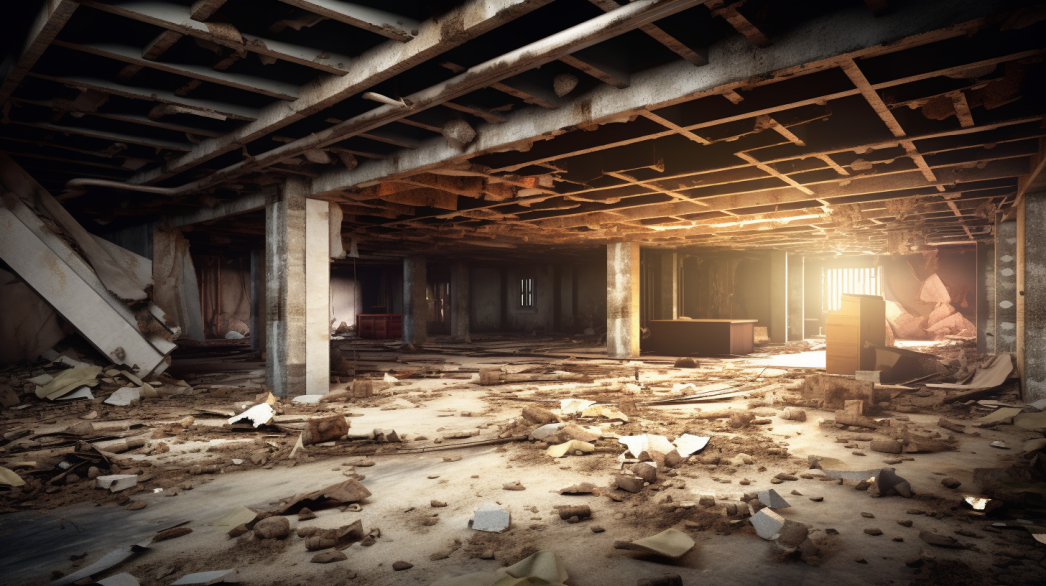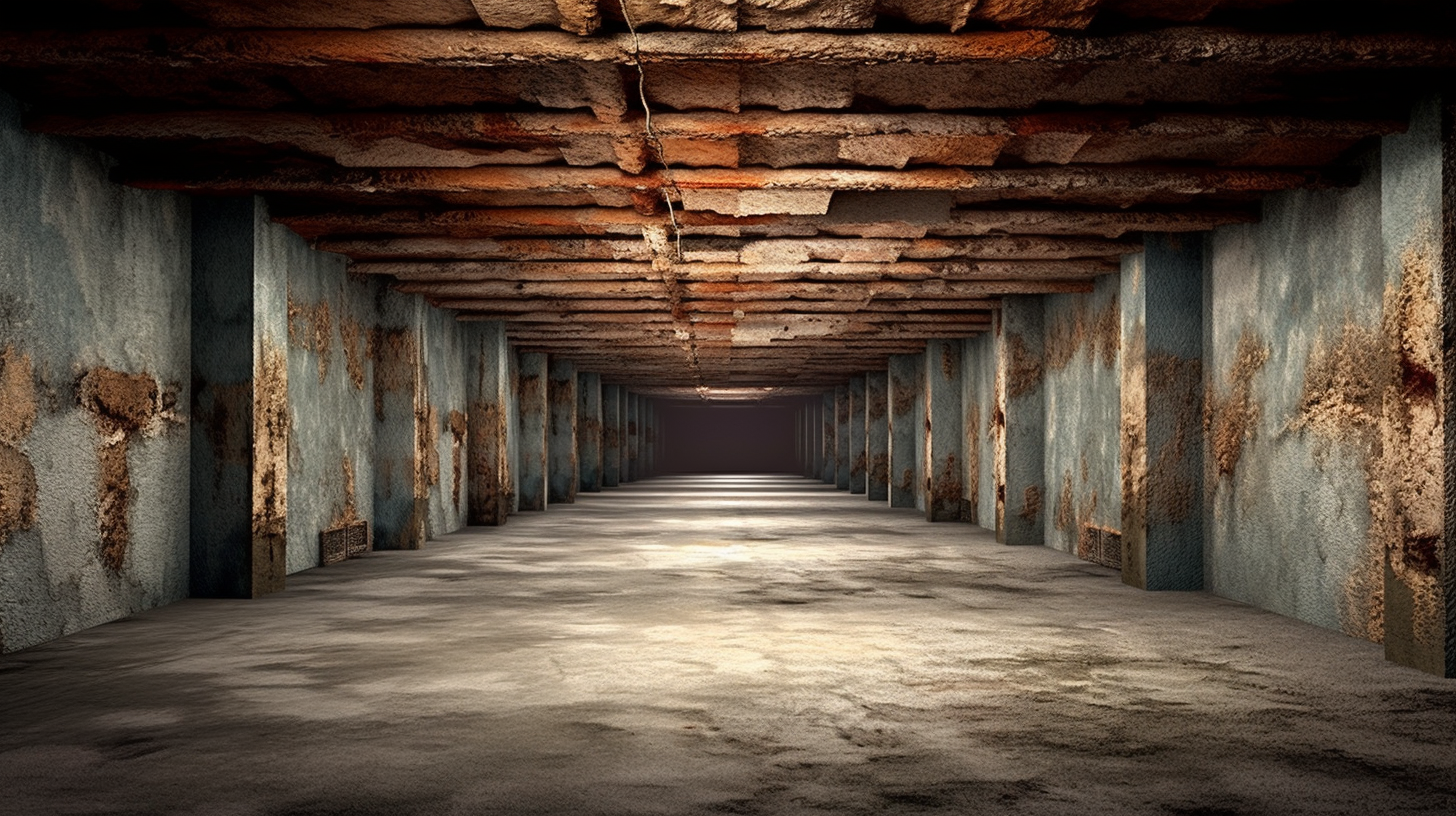The Effects of Humidity on Wood Furniture and How to Protect It

Humidity levels play a pivotal role in the health and durability of wood furniture. As a hygroscopic material, wood absorbs or releases moisture in response to the surrounding air's humidity levels, leading to physical changes that can affect both its structure and aesthetics. Whether it's a cherished antique or a contemporary piece, maintaining the right humidity levels is essential to prevent damage and ensure that wood furniture remains a lasting part of your home's decor.
Excessive humidity can cause wood to expand, potentially warping or distorting its shape, which can lead to joint stress and, over time, structural failure. On the other hand, environments with too low humidity can dry out wood, causing it to contract, crack, and become brittle. These changes not only compromise the furniture's strength and functionality but can also diminish its beauty and value.
This blog will provide a comprehensive overview of how humidity levels impact wood furniture, highlighting the importance of monitoring and controlling indoor humidity to safeguard these items. From understanding the relationship between wood and moisture to implementing practical strategies for humidity management, readers will gain valuable knowledge to help protect their wood furniture from the adverse effects of fluctuating humidity levels.
Understanding the Effects of Humidity on Wood
Wood is a dynamic material that interacts continuously with its environment, particularly with the moisture in the air. This interaction can lead to physical changes in wood furniture, affecting its appearance, structure, and durability. By comprehensively understanding wood's response to humidity changes and the potential damage caused by improper humidity levels, individuals can take proactive steps to protect their valuable wood pieces.
Wood's Response to Humidity Changes
Wood absorbs moisture from the air when humidity levels rise and releases moisture when the air becomes drier. This natural process is known as wood movement.
- Absorption and Release of Moisture: The fibers in wood can soak up or expel moisture, leading to expansion or contraction. This behavior is not uniform across all types of wood or even within a single piece, as different parts of the wood may react differently based on their orientation and grain pattern.
- The Concept of Wood Movement: Wood movement refers to the dimensional changes that occur as wood responds to variations in humidity. Properly dried wood is designed to accommodate some degree of movement, but extreme fluctuations can exceed the wood's capacity to adjust, leading to potential damage.
Potential Damage from Improper Humidity Levels
Improper humidity levels can lead to several issues that compromise the integrity and aesthetic appeal of wood furniture.
- Warping: Warping occurs when different parts of a wood piece expand or contract at different rates, causing the wood to bend or twist. This can lead to uneven surfaces and misaligned joints.
- Cracking and Splitting: Dry conditions can cause wood to lose moisture rapidly, leading to cracks and splits as the wood contracts. These defects are not only unsightly but can also weaken the structural integrity of the furniture.
- Swelling: Excessive moisture can cause wood to swell, making drawers and doors difficult to open or close and potentially stressing and damaging joints and veneers.
Optimal Humidity Levels for Wood Preservation
The preservation of wood furniture requires an understanding of how humidity affects wood and the ability to maintain conditions that prevent damage. By identifying the ideal humidity range and utilizing the right tools for monitoring, individuals can create an environment conducive to the longevity of their wood furniture.
Identifying the Ideal Humidity Range
The recommended humidity range for preserving wood furniture effectively is between 40% and 60%. This range strikes a balance that minimizes the risk of the wood absorbing too much moisture or becoming too dry, both of which can lead to structural and aesthetic issues.
- Why This Range Matters: Keeping humidity levels within this range helps prevent the wood from expanding and contracting excessively. Expansion can cause joints to loosen and veneers to buckle, while contraction can lead to cracks and splits in the wood. By maintaining the optimal humidity range, the natural movement of wood is accommodated without causing damage.
Tools for Monitoring Humidity
To ensure that humidity levels remain within the ideal range, it is important to regularly monitor the moisture content in the air. Several tools can assist in this task, providing accurate readings and helping to maintain the right conditions for wood preservation.
- Hygrometers: These devices measure the amount of moisture in the air, offering a direct way to monitor humidity levels. Digital hygrometers, in particular, provide precise readings and may include features such as temperature measurement and data logging.
- Smart Home Devices: Many smart home systems now include environmental sensors that can monitor humidity levels. These systems can alert homeowners when humidity levels fall outside the recommended range and can even be integrated with humidifiers or dehumidifiers to automatically adjust the moisture content in the air.
- Humidity Data Loggers: For those who need to track humidity levels over time, humidity data loggers can record and store information on moisture content. This can be especially useful in climates where humidity levels fluctuate significantly with the seasons.
Strategies for Protecting Wood Furniture from Humidity Damage
Wood furniture adds warmth and elegance to any space but requires careful maintenance to protect it from the damaging effects of humidity. By implementing effective strategies for controlling indoor humidity and ensuring proper furniture placement and care, homeowners can safeguard their cherished wood pieces against moisture-related damage.
Controlling Indoor Humidity
Maintaining stable indoor humidity levels is key to preserving the integrity of wood furniture.
- Using Humidifiers: In dry climates or during winter months when indoor air tends to be dry, using a humidifier can help add necessary moisture to the air, preventing wood from drying out and cracking. It's important to use a humidifier judiciously to avoid raising the humidity too high, which can lead to other issues like mold growth.
- Utilizing Dehumidifiers: During humid seasons or in naturally damp environments, a dehumidifier can remove excess moisture from the air, preventing wood furniture from swelling or warping. Dehumidifiers come in various sizes, so choosing one that's appropriate for the room where the wood furniture is located is crucial.
- Monitoring Humidity Levels: Regularly check indoor humidity levels with a hygrometer to ensure they remain within the recommended range of 40% to 60%. This allows for timely adjustments to humidifier or dehumidifier settings as needed to maintain optimal conditions.
Proper Placement and Care
The placement of wood furniture within a home can significantly impact its exposure to humidity fluctuations and other damaging conditions.
- Avoid Direct Sunlight and Heat Sources: Place wood furniture away from direct sunlight, which can cause fading and drying, and from heat sources like radiators or vents, which can lead to drying and cracking. Both can also contribute to uneven humidity exposure.
- Consider Room Choice: Place wood furniture in rooms with stable humidity levels. Kitchens, bathrooms, and basements often experience higher humidity levels and may not be ideal locations for valuable wood pieces.
- Regular Maintenance: Dust wood furniture regularly to keep surfaces clean and apply appropriate wood oils or polishes to help maintain moisture levels in the wood. Always follow the manufacturer's recommendations for care and maintenance to avoid damaging the finish.
Maintenance Tips for Wood Furniture
Wood furniture is a timeless addition to any home, offering both beauty and durability. However, to maintain its luster and structural integrity, regular maintenance is essential, especially in environments prone to humidity fluctuations. This guide will cover the fundamentals of cleaning and polishing wood furniture and provide advice on addressing minor humidity-related damage.
Routine Cleaning and Polishing
Keeping wood furniture clean and well-polished is key to its preservation, protecting it from dust, dirt, and the potential damage caused by humidity.
- Cleaning: Dust wood furniture regularly with a soft, dry cloth to prevent buildup. For deeper cleaning, use a slightly damp cloth followed by a dry cloth to remove any moisture. Avoid using harsh chemicals or abrasive cleaners that can strip the wood's natural oils and damage its finish.
- Polishing: Apply a quality wood polish or wax every few months to enhance the furniture's natural beauty and create a protective barrier against moisture. Choose products specifically designed for wood furniture, and always test a small, inconspicuous area first to ensure compatibility with the finish.
- Avoid Direct Water Exposure: When cleaning, avoid letting water sit on the wood surface, as prolonged exposure can lead to stains, warping, or swelling.
Addressing Humidity-Related Damage
Even with careful maintenance, wood furniture can sometimes suffer from humidity-related damage. Here's how to address minor issues:
- Warping and Swelling: If a piece of furniture becomes slightly warped or swollen due to humidity, it may return to its original shape once humidity levels are stabilized. Using a dehumidifier in the room can help remove excess moisture from the air and gradually correct the issue.
- Cracking: Minor cracks can sometimes be treated with wood filler or putty, followed by sanding and refinishing the affected area. However, it's important to address the underlying humidity problem to prevent further damage.
- Professional Restoration: For significant damage or valuable antique pieces, consulting a professional furniture restorer is recommended. They can assess the extent of the damage and perform necessary repairs to restore the furniture's appearance and structural integrity.
Advanced Protection Techniques for Wood Furniture
To ensure the longevity and durability of wood furniture, especially pieces of significant value or historical importance, advanced protection techniques are crucial. These methods go beyond routine cleaning and maintenance, offering enhanced protection against humidity and its associated risks.
Sealants and Finishes
Applying the right sealants and finishes can significantly bolster wood furniture's defense against moisture, preventing warping, swelling, and cracking.
- Overview of Sealants and Finishes: Various products are available to protect wood furniture, including polyurethane, varnish, lacquer, and oil finishes. Each type offers different levels of protection, aesthetics, and maintenance requirements.
- Polyurethane: Known for its durability, polyurethane provides a hard, water-resistant finish that is ideal for surfaces that see frequent use. It's available in oil-based and water-based formulas, with different sheens ranging from matte to glossy.
- Varnish: Varnish enhances the natural beauty of wood while offering good protection against moisture and UV light. It tends to be more flexible than polyurethane, making it less prone to cracking.
- Lacquer: Offering a durable and fast-drying finish, lacquer creates a high-gloss surface that resists moisture and scratches. However, it may require professional application due to its quick drying time and potent fumes.
- Oil Finishes: Natural oil finishes, such as linseed or tung oil, penetrate the wood, providing a more natural look that enhances the wood's grain. While offering less moisture resistance than other finishes, oil finishes are easier to repair and maintain.
Climate-Controlled Environments
For high-value or antique wood furniture, maintaining a climate-controlled environment is one of the most effective ways to protect against humidity damage.
- Benefits of Climate-Controlled Environments: These environments provide consistent temperature and humidity levels, crucial for preventing the wood from reacting to fluctuations in moisture content. This stability is especially important for antique furniture, which may be more susceptible to damage.
- Implementing Climate Control: Climate-controlled environments can be achieved through specialized HVAC systems equipped with humidifiers and dehumidifiers to regulate air moisture. For individual pieces or smaller collections, climate-controlled display cases or storage units can offer targeted protection.
- Considerations for High-Value Pieces: When preserving high-value or historically significant pieces, consulting with conservation experts can provide tailored recommendations for climate control settings and care practices to ensure optimal preservation.
FAQs
-
How Does Humidity Affect Wood?
Humidity causes wood to absorb moisture, leading to expansion, and lose moisture, leading to contraction. These changes can result in warping, cracking, and swelling of wood furniture, affecting its appearance, functionality, and structural integrity.
-
What's the Ideal Humidity for Wood?
The ideal humidity level for wood furniture is between 40% and 60%. Maintaining humidity within this range helps minimize the risk of damage caused by excessive moisture absorption or loss.
-
Can Humidity Damage Be Reversed?
Minor humidity damage like slight warping or swelling can sometimes be reversed by stabilizing humidity levels. However, severe damage such as deep cracks or structural warping may require professional repair or be irreversible.
-
How to Monitor Humidity Levels?
Use a hygrometer to monitor indoor humidity levels accurately. Digital hygrometers can provide precise readings and are often equipped with features like alerts to inform you when humidity levels fall outside the recommended range.
-
Best Way to Protect Wood from Humidity?
To protect wood furniture from humidity:
- Maintain stable indoor humidity levels using humidifiers or dehumidifiers as needed.
- Apply appropriate sealants or finishes to create a moisture barrier.
- Avoid placing wood furniture near heat sources or in direct sunlight, which can exacerbate the effects of humidity.
- Regularly clean and maintain wood furniture according to manufacturer recommendations.
Contact Encapsulations Down Under Today!
Encapsulations Down Under will do everything we can to ensure your experience with us is excellent.
Request A FREE Estimate
We will get back to you as soon as possible.
Please try again later.
CHECKOUT RECENT POST



Schedule Your FREE Crawl Space Evaluation!
Did you know YOU DON'T HAVE TO BE HOME for us to provide you with your 100% FREE crawl space inspection and report?

RECENTLY FEATURED ON
FOX59
Muncie Office:
Encapsulations Down Under
Phone: 317-707-9444
Email: info@encapsulationsdownunder.com
Address:
4600 E 25 N
Muncie, Indiana 47303
Hours:
Mon-Sun 8AM to 9PM EST
Indianapolis Office:
Encapsulations Down Under
Phone: 317-754-2884
Email: info@encapsulationsdownunder.com
Address: 3747 N Sadlier Dr
Indianapolis, IN 46226
Hours:
Mon-Sun 8AM to 9PM EST
Services
Copyright © 2021 Encapsulations Down Under | Website Design & SEO by Disruhptiv Marketing & Media

